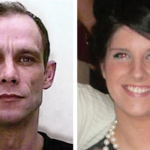Police Media Operations against NYE Halliwell Investigation
by TIM HICKS
~~~~~
5.8 – Police Media Operations against the NYE’s Halliwell Investigation
Part 2: The GMP and Helen Sage
~
Police Media Operations against the NYE’s Halliwell Investigation
This article is a continuation of an earlier article Police Media Operations against the NYE‘s Halliwell Investigation, which covered media operations against the NYE by 1. Wiltshire Police, 2. North Yorkshire Police (NYP) and 3. Cleveland Police. This article separately covers media operations by 4. Greater Manchester Police (GMP).
The NYE has adopted this approach for reasons of space, but also because the Helen Sage case requires more in depth coverage and justifies an article of its own.
To fully appreciate this article you should read article Police Media Operations against the NYE‘s Halliwell Investigation, or alternatively just read the sections on information warfare and the analysis of Halliwell’s undetected victims below.
If you have read it the article Police media operations against the NYE‘s Halliwell investigation, please skip the section below on Information Warfare and go straight to the section entitled “The Strange Case of Helen Sage” that follows it.
Information Warfare: The NYE’s approach is vindicated by the BBC
The murder of independent investigative journalists Daphne Caruana Galizia (NYE tribute here) and Jamal Khashoggi have highlighted the dangers facing journalists that investigate the state and/or criticise public bodies like the police. Accordingly, the NYE has been running a series of articles on information warfare being conducted against journalists.
This theme has now been taken up by the BBC – thereby vindicating the NYE’s approach to this subject and justifying its extension of it from the military, to the police and other public bodies. Jane Kinninmont writing in a BBC article about the Khashoggi case [1] commented:
“Mr Khashoggi’s case is an unusually prominent incident, but it is a symptom of deeper trends – of …….. intolerance of free expression”.
“This trend is exacerbated by the escalating use of information warfare.” [My emphasis in bold].
Information Warfare was until recently a military term but is a very broad concept. It is now applied outside military conflicts and the armed forces. Therefore a discussion of information warfare terminology is required at this point in the article:
- Information Warfare [2] is a United States military concept involving the collection [2] of tactical information, assurance [2] that one’s own information is valid, spreading of propaganda [2] or disinformation [2] to demoralize [2] or manipulate [2] the enemy and the public, undermining the quality of opposing force information and denial of information-collection opportunities to opposing forces. Most of the rest of the world use the much broader term of Information Operations[2] which has combined the making use of technology, as well as focusing on the more human-related aspects of information use.
- Media manipulation [2] is a series of related techniques in which an image or argument that favors their particular interest of the organisation is promulgated. Media manipulation tactics may include the use of outright deception and often involves the suppression of information [2] or points of view.
- Information Operations and Media Manipulation are often incorporated into Media Operations[8].
In this context, police media operations are part of Information Warfare and can be passive, proactive and/or aggressive. They can include:
- Information suppression
- Information withdrawal
- Media manipulation
- Withdrawal from contact and interaction
- Media suppression
- Legal action or threats of legal action
- Computer
- Surveillance, both electronic and physical
- Detention or arrest
- Stonewalling: “A refusal to communicate or cooperate. Such behaviour occurs in situations such as ….diplomatic negotiations, politics and legal cases. Tactics in stonewalling include giving sparse, vague responses, refusing to answer questions, or responding to questions with additional questions”
Analysis of Halliwell’s Undetected Victims
In their article “Halliwells undetected victims”, the authors assessed that although he has only been convicted for two murders, based on two or three murders a year, Christopher Halliwell could have killed up to sixty women. This raises the question who are the missing (potentially) fifty eight victims?
The authors asserted they fall into five distinct categories:
- Murders for which no one has been convicted and which the police have not connected Halliwell to. (e.g. Caroline Glachan)
- Murders where a) the wrong man has been convicted, or (b) the wrong man has been accused of the murder and the police are not pursuing any other suspects, because of confirmation bias (see below) in the investigation. (e.g. Ann Heron).
- Missing persons that the police are satisfied are murder victims (“no body murders”) even though there is no physical evidence of crime (e.g. Claudia Lawrence).
- Murder victims whose bodies have been concealed, but who have not been reported as missing. So consequently the police are genuinely unaware that any crime has taken place. (e.g. Becky Godden-Edwards, who was only known to be missing when the police recovered her body).
- Murder victims whose bodies have been concealed, who the police are treating as missing persons i.e. probably still alive, when they are in fact murder victims. Which brings us to the strange case of Helen Sage.
The Strange Case of Helen Sage
Helen Sage was a mother and a prostitute who was last seen in Manchester’s red light district in August 1997. (NYE investigation here).
The authors believe Helen Sage was murdered in August 1997:
- As a prostitute, Helen was vulnerable to being attacked by one of her clients.
- Helen Sage had no reason to disappear.
- Helen Sage had a young child she was devoted to and would not have abandoned. A key test applied in missing women cases to identify if they have been murdered.
- Although her means of income was prostitution, she apparently abandoned her pitch in Manchester’s red light district and has not come to the attention of police since.
- The police conducted enquiries at the time but were unable to find her or provide an explanation for her disappearance.
- GMP has not formally linked Helen’s disappearance with the murder of Julie Jones, (Case 19. Julie Jones is pictured above in the lead illustration), although it was recognised at the time that there were similarities. Julie Jones was a prostitute and mother of two, whose naked body was found partially concealed at Shudehill Manchester, six days after she was reported missing on the 3rd of July 1998. (See NYE “East Lancs Ripper” article here and The other Northern and Midlands cases article here). The point being that like (as the authors believe) Helen Sage, her body was concealed, although unlike Heather Sage, the concealment was inadequate. Both cases fit Christopher Halliwell’s modus operandi. Manchester Evening News articles here and here, please note that GMP have confirmed to the NYE that Pauline Currie and Georgina Moore have been traced and are alive.
However, GMP still classify Helen as missing, not dead.
Anyone with information about Julie Jones or Helen Sage is asked to call the GMP Cold Case Review Unit on 0161 856 5978, or Crimestoppers on 0800 555 111.
- Greater Manchester Police (GMP) Proactive Media Operations against the NYE over the Helen Sage case.
Helen is still classified as missing, although the authors believe she has obviously been murdered. We put this to GMP and received this response:
“At the time of Helen’s disappearance a number of hypotheses were explored to establish what happened to her.
As with cases of this nature, this is normal procedure to make sure that every outcome is considered to try and find that person.
Helen’s disappearance is not currently being treated as murder as there has never been any physical evidence to suggest she was killed.
Of course, if any new information came to light we would review this.”

Chief Constable Ian Hopkins of Greater Manchester Police
Stonewalling the NYE’s Halliwell investigation
The GMP follows the “Bottomley Criteria” of only declaring a missing person as murdered, if there is physical evidence of crime. The nature of sex workers operating practices required that Helen Sage got into a car with an unknown man. Under these circumstances it is impossible to detect physical evidence of crime at the pick-up point, because there was no crime there, simply a sex worker getting into a client’s car in the normal course of business. The crime occurs later in the car or at a remote location.
If the murderer then conceals the body skilfully, there will be no physical evidence of a crime anywhere other than at the gravesite. As with the murder of Becky Godden-Edwards, the victim will remain undetected indefinitely. Her murder was only revealed when Halliwell voluntarily led Detective Superintendent Steve Fulcher to her grave eight years later.
Clearly the absence of any physical evidence does not rule out the possibility of a “no body” murder. It therefore should not be used as the sole elimination criteria, to the exclusion of circumstantial evidence. Particularly in cases involving sex workers, who are much more prone to violence as described in this harrowing Teesside Gazette article by Naomi Corrigan.
West Yorkshire Police used formal criteria devised by Chief Superintendent Charlesworth to identify if an attack should be linked to the Yorkshire Ripper. Unfortunately the Charlesworth Criteria were too rigid. Consequently some attacks by the Yorkshire Ripper were eliminated from the enquiry when they should have been included. Thereby hindering the investigation. (NYE article here).
Unlike GMP, other forces will classify suspicious disappearances as murder based solely on circumstantial evidence. Some examples:
- North Yorkshire Police commendably re-classified the Claudia Lawrence disappearance as a murder, even though there was no physical evidence of abduction or a crime scene.
- Police Scotland follows a policy of accepting that “every enquiry is unique and assessed on the individual facts of each case, not on a fixed, inflexible set of criteria”.
- Missing Ipswich prostitute Amanda Duncan was a devoted mother to her child. (BBC Report here). The Suffolk Police detective leading this investigation -which is being treated as a murder despite the fact that there is no physical evidence of crime- stated: “She was a very good mother, her children were well dressed, well cared for and to just disappear with a nine-month-old child at home is not really a possibility.” This officer has adopted exactly the same position as the authors on the similar Helen Sage case.
It must be a concern that irrespective of the lack of physical evidence at the pick-up point, Helen Sage was murdered in August 1997 on the day of her disappearance.
I have raised these concerns with Chief Constable Hopkins of the GMP. However, these concerns have not been addressed or responded to, other than a statement from the GMP Press Office that:
“As regards your question regarding force policy – this has been addressed and we will not be drawn further”.
A classic example of stonewalling and proactive information suppression to prevent media scrutiny of a potentially bungled investigation (media suppression).
- Greater Manchester Police and Crime Commissioner Passive Media Operations against the NYE over the Helen Sage case.
Tim has also raised these concerns with Baroness Hughes, the Police and Crime Commissioner for Greater Manchester (PCCGM). A very strong case for designating Helen Sage’s disappearance as a murder was put forward and Tim also requested that the GMPs handling of Helen Sage Case is reviewed by another force. Her response?
Nothing.
PCCGM Baroness Hughes did not reply or even acknowledge my e mail.
Baroness Hughes, Greater Manchester Police and Crime Commissioner
Stonewalling the NYE’s Halliwell investigation

Baroness Hughes, Greater Manchester Police and Crime Commissioner
Stonewalling the NYE’s Halliwell investigation
A classic example of stonewalling and passive information suppression to prevent media scrutiny of a potentially bungled investigation (media suppression). Worse, this is obviously a coordinated response between GMP and the Police and Crime Commissioner that is supposed to be holding it to account.
What is particularly concerning is that the NYE has identified a potential suspect – Christopher John Halliwell – and the police are refusing to investigate him.
The wider implications of the refusal to engage by GMP and GMPCC
The police have a difficult relationship with the media, because it is often critical of the police, in accordance with its duty to hold them to account:
“The media also play a vital role in holding the police service to account and in connecting us with the public – this includes highlighting when things may have gone wrong or where policing is under legitimate scrutiny. The relationship should also therefore be challenging and we need to recognise the role the media discharge on behalf of the public in ensuring that we are accountable.
The responsibility to be open, transparent and accountable is part of the Code of Ethics and sits with everybody in policing.
In recent years there has been a perception, rightly or wrongly, that the police have withdrawn and communicate less openly with the media. This does policing a disservice and I am determined that we need to reset the relationship with the media – an appropriate and professional relationship between the police and the media is in the public interest.” (Deputy Chief Constable (DCC) Gareth Morgan, National Police Chiefs Council Lead for Media Relations)
It appears to me that the response of Baroness Hughes and Greater Manchester Police is symptomatic of the type of behaviour that Deputy Chief Constable Morgan is so critical of.
Using DCC Morgan’s terminology above, the implication of this refusal to engage with the NYE, is that journalists are properly challenging the police and holding them to account, by highlighting a case where things obviously went wrong. In short, policing is under legitimate scrutiny from NYE journalists and GMP are unable to refute the arguments that have been put forward that Helen Sage was murdered. So rather than admit this and re-open the case, they are simply ignoring it, and have withdrawn from discussion.
Why are the police refusing to re-examine Helen Sage’s case?
There are many possible reasons why GMP is refusing to engage with the NYE over the inconsistencies of the Helen Sage case. Only the Chief Constable knows the answer to the above question. These are potentially some of them:
- The police are unsympathetic to prostitutes and do not want to spend time investigating crimes against them. Historically this may have been true within the police service, but in my view this is not now credible. GMP has a very good Cold Case Review Unit. Please see this program on the way GMP Officers investigated a crime against a prostitute and the sympathetic way they treated her. I have also been very impressed by the commendable way NYP is treating this type of offence. NYP statement here and here, issued in conjunction with the charity ugly mugs. As an aside, if this approach had been adopted by the police earlier, Halliwell might have been detected earlier.
- There is a natural antagonism between the police and journalists, referred to above by DCC Morgan. Some of the NYE articles have been critical of police investigations and the police generally do not appreciate being criticised by anyone, particularly journalists. Hence the refusal to enter into a process that could reveal it bungled the original investigation into Helen Sage’s disappearance.
- Prostitute murders are notoriously difficult to resolve, because they are stranger murders. Witnesses i.e. clients, pimps and other prostitutes are reluctant to come forward. It may be that GMP does not want to expend resources on a historic case that may be unsolvable.
- The NYE has alleged that serial killer Christopher Halliwell should be considered as a suspect for the murder of Helen Sage and Julie Jones (Article here). Following the conviction of Yorkshire Ripper Peter Sutcliffe, (who may also have operated in North Yorkshire, NYE investigations here, here and here) the conduct of the investigation by West Yorkshire Police was severely criticised by senior policeman Sir Lawrence Byford. Byford assessed that the investigation was flawed, that Sutcliffe should have been arrested earlier and if he had been; it would have prevented the deaths of several of his victims. In particular, should a Chief Constable admit that his force failed to arrest a serial killer, it will open his force up to a furore of criticism for allowing him to go on to commit further murders. Particularly if there are indeed sixty of them.
No Chief Constable will willingly open up his force to criticism, by admitting it botched an investigation. As an example, look at the resistance the NYE had from NYP before the force would admit to its inexcusable failure to arrest Scarborough Mayor and Conservative Councillor Peter Jaconelli. BBC Report here.
Hence, perhaps, the reason the NYE team has been subjected to media suppression operations by four police forces and a Police and Crime Commissioner.
NYE appeal for information. Have you seen Christopher Halliwell at any time in the period 1987 – 2011?
Whenever we run an article on a cold case, the NYE always runs an appeal for information, to try to progress them by keeping these cases in the public eye and generating information. This is in the public interest and can assist the police. We will finish with our usual appeal for information:

Claudia Lawrence and Christopher Halliwell
He had a slim athletic build and spoke with a slight Swindon accent. You can see and hear him in the video here taken while he was in custody.
Any information would considerably assist our knowledge of Halliwell’s movements. So please contact the NYE using our email address: news@nyenquirer.uk if you think you can help.
Sources used in the article are accredited in brackets as follows:
[1] BBC article or broadcast. [2] Wikipedia article.The NYE Christopher Halliwell series
The NYE has recently run a series of articles on the crimes which may have been committed by serial killer Christopher Halliwell, who is currently serving a full life term for two murders committed in Swindon in 2003 and 2011.
These articles are now arguably the best source of information on the full range of crimes potentially committed by Halliwell openly available.
If you enjoyed this article, you may want to read the others in the series:
- The breaking of Detective Superintendent Stephen Fulcher. By Tim Hicks
- Book review: “Catching a serial killer” by Stephen Fulcher. By Tim Hicks
- Christopher Halliwell and Peter Sutcliffe compared. By Chris Clark & Tim Hicks
- Christopher Halliwell how many victims? By Chris Clark & Tim Hicks
- Christopher Halliwell: The Secret Murders. By Chris Clark & Tim Hicks. Parts 1 – 11.
- Scotland.
- Is Halliwell the “East Lancs Ripper”?
- The other Northern and Midlands cases.
- Have you seen this man?
- The River Tees Murders.
- Halliwells undetected victims
- Police media operations against the NYE‘s Halliwell investigation. Part 1:
(1. Wiltshire Police, 2. North Yorkshire Police and 3. Cleveland Police).
- Police Media Operations against the NYE’s Halliwell investigation. Part 2:
(4. Greater Manchester Police. 5. Greater Manchester Police and Crime Commissioner).
- York: Did Halliwell murder Claudia Lawrence?
- The Swindon
- Inside Out Justice. Who murdered Linda Razzell?


























Comments are closed.